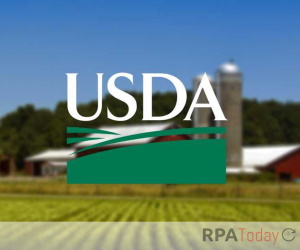
The U.S. federal government is one of the largest consumers of RPA in the world. In a recent report, called The State of Federal RPA, the General Services Administration (GSA) noted the technology saved government agencies around 850,000 hours in 2020 and that its approach to RPA is rapidly maturing. The report also specifically highlighted five agencies that have had the most success implementing RPA programs. The GSA’s Community of Practice has held up these agencies as models for others in the federal government.
Each agency has achieved what the GSA refers to as Level 4 Maturity (by reaching milestones including 50-100 automations in production, at least 150,000 hours of workload reduction per year, agency-wide processes automation, robust pipeline of projects, cloud platform delivery and more). In the coming weeks, RPA Today will look at each of those “program showcases” for learnings organizations can apply to their own programs that will perhaps enable them to scale.
The U.S. Department of Agriculture’s (USDA) Office of the Chief Information Officer (OCIO) has developed automations that are in use agency-wide and has identified more than 70 processes for future automation. A focus on unattended bots has maximized efficiency and security, resulting in 2,500 hours saved per bot.
The agency made a strategic decision to move responsibility of its RPA program from the CFO’s office, which first generated interest in the technology in 2017, to the OCIO, which prioritized an enterprise-wide focus and implemented both centralized and federated development models. In the centralized model, the agency’s “mission areas” (which are analogous to business lines in a private enterprise) can use the RPA Service Management Office (SMO) development team. In the federated model, mission areas can use their own developers.
According to the report, USDA’s best practices include:
- Standing up a cloud enterprise platform compatible with unattended automations that maximize automations’ efficiency and security
- Creating an RPA Service Management Office (SMO) using certified developers and a standardized approach to expedite agency-wide adoption
- Providing ancillary service capabilities such as automation development and automation operation and maintenance at a firm-fixed-price.
- Using a robust program management dashboard to track all automations deployed, in development, and under evaluation
- Promoting flexibility within mission areas by supporting two development models that maximize suitability
In addition to establishing baseline metrics for growth, the comprehensive report defines and provides a standardized framework for measuring RPA program maturity. You can download a PDF copy of the report here.

